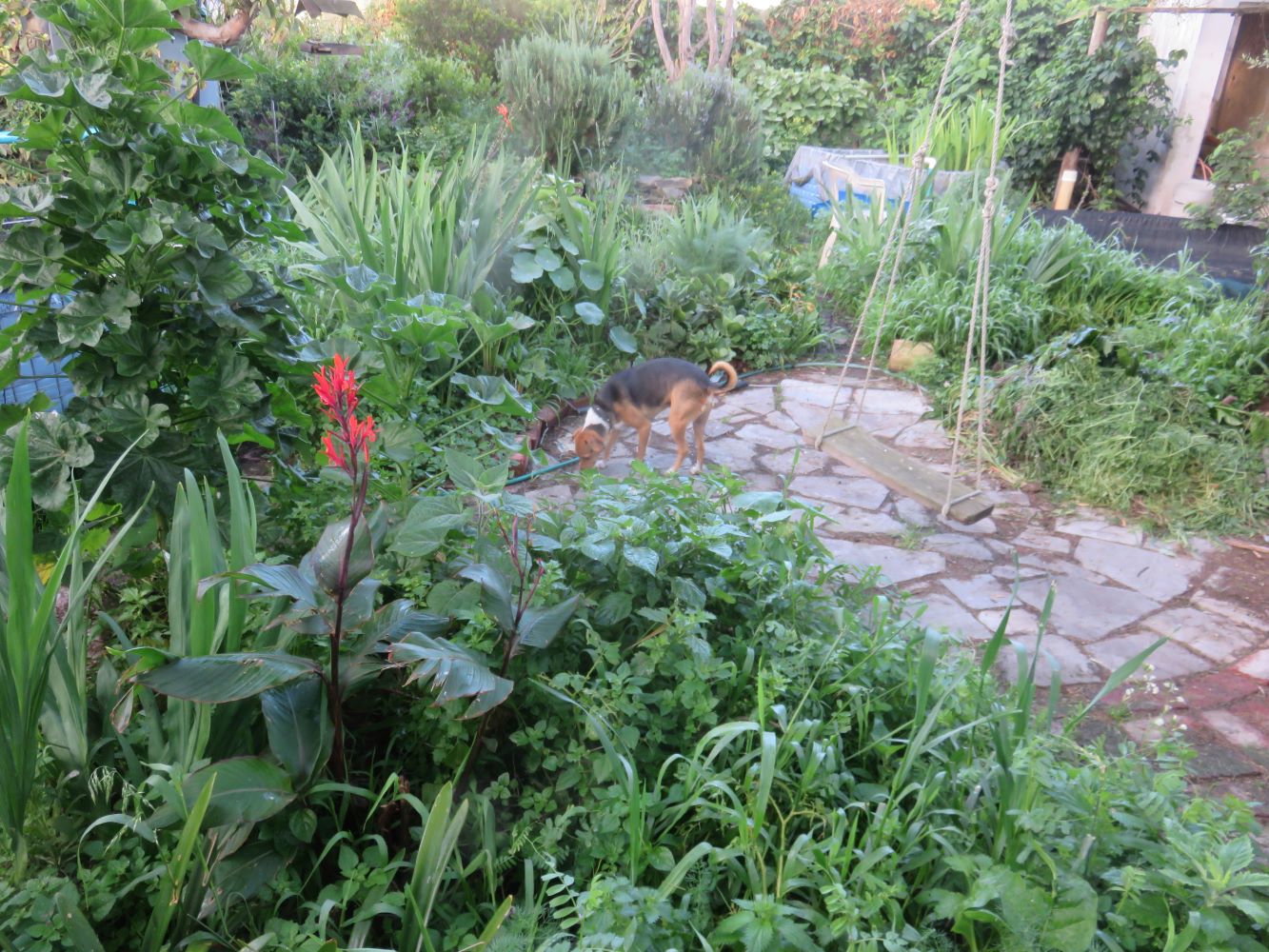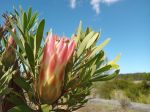Dear Reader, in this age of AI created content, please support with your goodwill someone who works harder to provide the human-made. Sign up in the righthand column or bottom of this page. You will receive my hand illustrated monthly newsletter RESTORE NATURE and access to the biodiversity garden design course as I write...and nothing else, I respect your time.
The benefits of biodiversity in a community wild flower garden
The example of a stepping stone garden in Sluysken Park Welgemoed, the benefits of biodiversity gardens to a community and tips on how to make one.
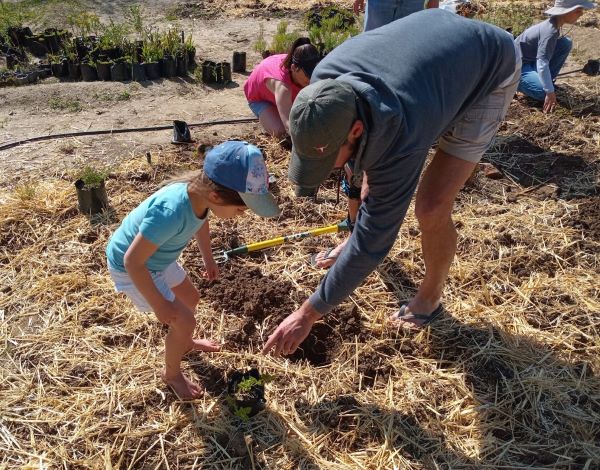 family and community, building and enjoying the benefits of biodiversity
family and community, building and enjoying the benefits of biodiversityWhat is a stepping stone garden ?
A stepping stone garden is a patch of indigenous vegetation which can be quite small, that is part of a stepping stone corridor between larger areas of greater biodiversity.
The point of the stepping stones is to allow small animals such as insects and birds to be able to have greater mobility by moving from one stepping stone to the other so that the areas of greater biodiversity do not become 'islands'. Animals isolated in islands tend to become inbred and genetically less diverse and in greater danger of extinction.
Building a bridge for wildlife
Habitat fragmentation is one of the main threats to biodiversity. It is caused by urban or agricultural development cutting off areas of habitat and isolating them. This isolation constrains the migration of animals and leads to population decline.
For larger mammals like monkeys, for example, these patches of habitat in a corridor between larger more diverse areas can be between 10 000m squared and 2.5 km squared, but in the case of insects and smaller animals, much can be accomplished with smaller spaces.
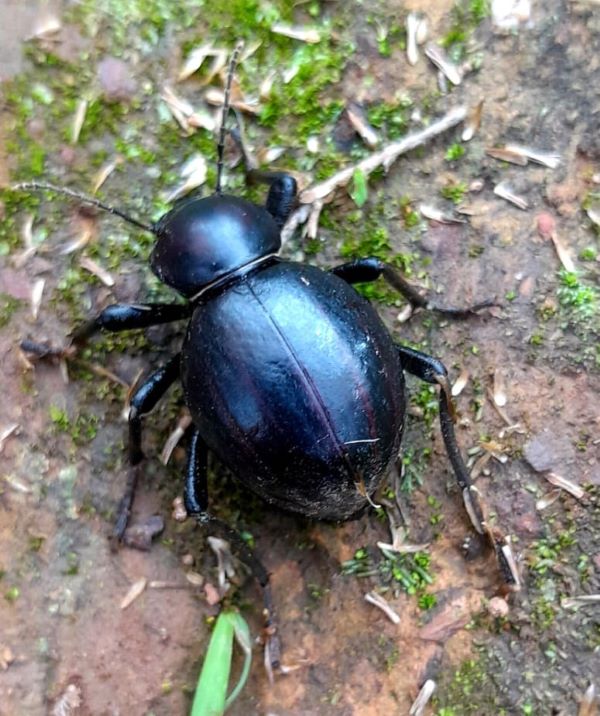 A karoo dung beetle. You won't see many of them in urban biodiversity gardens, but they are part of South African folklore and legends
A karoo dung beetle. You won't see many of them in urban biodiversity gardens, but they are part of South African folklore and legendsCatering for insects
The stepping stones must be close enough for insects and birds to fly between them. In these patches it is important to plant varieties that would occur locally, within 10km, in order to avoid inter variety hybridization that can lead to Frankenstein plants.
When insects have co-evolved with plants, so that they have a lock and key type of relationship, hybridization between plant varieties can mean that the insects are not able to utilize the plants because their chemical make up or nectary shape is inaccessible to the specialized insect. These hybridizations occur when plants of the same or closely related species are brought from outside the area, or bred specifically for decorative effects in nurseries.
A conservation conundrum
Developers must commission a company to survey a site and give an assessment on its worth based on how pristine the vegetation is, or the presence of red data species. If the site is too disturbed to be worth saving, it can be rubberstamped by the impact assessment process and development would be allowed.
With ever increasing encroachment of housing in our city these days all sites in the Fynbos biodiversity hotspot centred around the metropole of Cape Town have been damaged and degraded to some degree. The emphasis in conservation should be on restoration rather than 'conserving' pristine areas as they don't exist. We rather need to hold onto the little biodiversity which remains.
There are so many strategies to restore vegetation which are very much dependent on the context you have to deal with.
Choosing a strategy
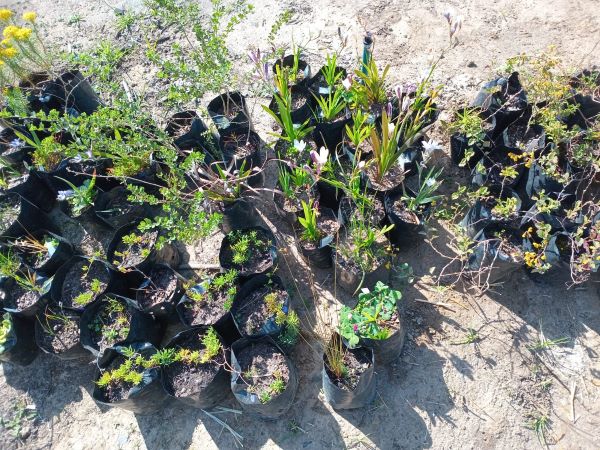 Replanting from scratch requires rasing or buying many plants
Replanting from scratch requires rasing or buying many plantsNatural regeneration
In a video on the Tokai Fynbos restoration project Tony Rebello spoke about 'natural' or 'passive' regeneration. This is allowing the vegetation on a piece of land to regenerate itself by removing interference like grazing animals and invasive aliens.
Natural regeneration has been aided in some areas of the world with soil conserving mechanisms like berms and brush piles that trap soil and seeds in heavily eroded areas, or even planting tree branches in the ground to encourage birds to roost and drop seeds in their poop.
In Fynbos natural regeneration is sometimes stimulated with controlled burning as the vegetation is fire adapted and needs burning from time to time. A fire will allow the seeds remaining in the soil seed bank to germinate and repeat a cycle of propagation.
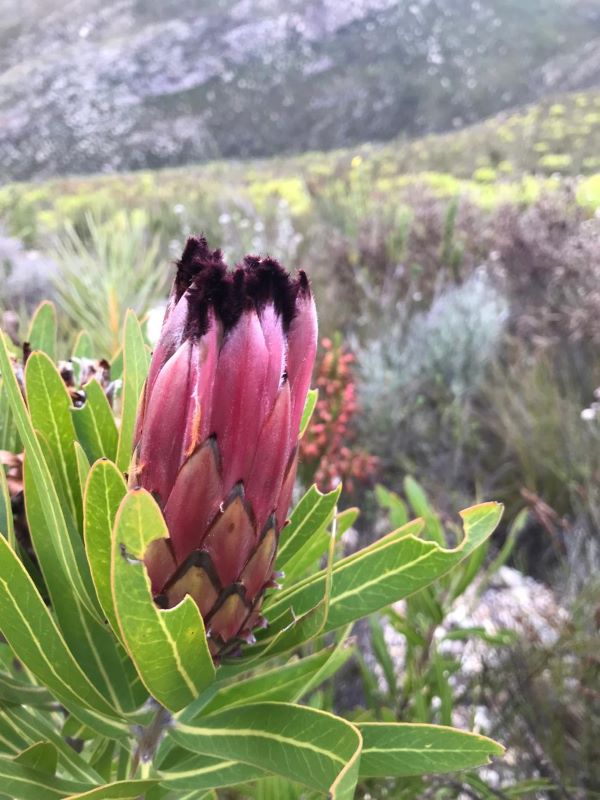 Some intact Fynbos far from Cape Town
Some intact Fynbos far from Cape TownReplanting from scratch
Unfortunately many publicly available pieces of land in Cape Town are so degraded that natural regeneration would be fruitless, and controlled burning would be too distruptive in heavily populated areas. Thus on many prospective biodiversity garden sites it would be a good idea to focus on actively replanting.
Seeds can be collected close by and either sowed on the site or in nurseries. In many areas of the world native flowering plants do best in low fertility environments where they suffer less competition and keeping the soil from building fertility is important. It has not become part of practice in Cape Town yet. Some invasive alien weeds reshape the soil environment by making it more fertile and this squeezes out the low nutrient adapted Fynbos plants in many low lying sandy parts where they once thrived.
However if the desired restoration is of vegetation adapted to rich soil, such as Renosterveld, this does not apply, as was the case with Sluysken park.
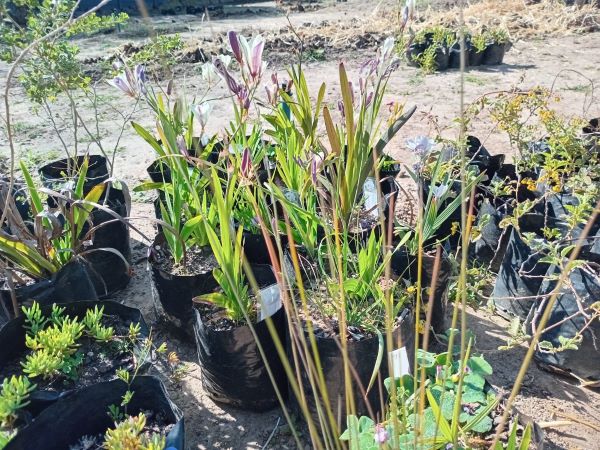 A wide selection of plants were sourced by Louise for the garden, so much work behind the scenes.
A wide selection of plants were sourced by Louise for the garden, so much work behind the scenes.Rehabilitating soil and testing for natural regeneration
Communitree favors a three year succession, starting with soil rehabilitation first. In the first year groundcovers are planted, then later host and pollinator plants and in the third year climax species like heathers and proteas. Other projects do not do this, but plant out the whole native garden directly.
Most projects advise taping off the area planned for the garden to prevent mowing by the city, and observing it for a year to see what will regenerate naturally before planting anything.
Why build a biodiversity garden ?
The reasons why one would take on such a project are partly universal and partly very particular to the situation in Cape Town.
Social and educational benefits of biodiversity activism
There are many social benefits to restoring natural vegetation in a locality. I communicated with a number of people involved in the Sluysken Park project to find out how they saw the benefits of the regeneration project.
Sarita explained to me that the park was the community. It is legendary and has been a part of life in Welgemoed for a very long time. It is a place that improves the environment for raising children. The park design draws kids to the outdoors, which is important these days as an antidote to overindulgence in social media, and encourages playing, physical activity and learning about plants and insects and the importance of the local Renosterveld veld type.
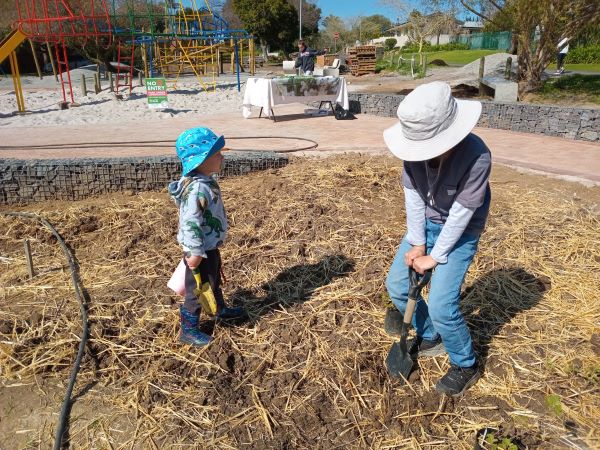 Seeing the enthusiasm of children for this project is magic
Seeing the enthusiasm of children for this project is magicVolunteering with one's children teaches them valuable lessons about giving, and it is very rewarding. So much preparation had been done by the organizers that volunteering is made easy, and only requires willing hands and a heart with a desire to make a difference. It teaches the children about communal agency, being part of a group working to build for the future.
Natalie also underlined that the park benefits the many young parents as well as retired people living in Welgemoed. It is in walking distance from many homes. Children can be entertained on the spur of the moment without traveling far which must lighten a busy parent's burdens, it is fenced and safe as the area is busy.
Volunteering educates children on plants and the value of the park embodied in all the work and effort that went into it. This makes them understand and appreciate the park and be enthusiastic to see 'their' plants growing. Being part of it was very easy as all you needed was time. It provides so much pleasure to participate in the planting.
In addition to the volunteers there are paid workers, and I've a feeling they do most of the planting work when push comes to shovel. I heard a rumour that they are part of a job creation project for previously homeless people, but I'm not sure of the facts. There are a few projects like that in Cape Town. One I heard of over the weekend that is organized around food gardens is called Streetscapes.
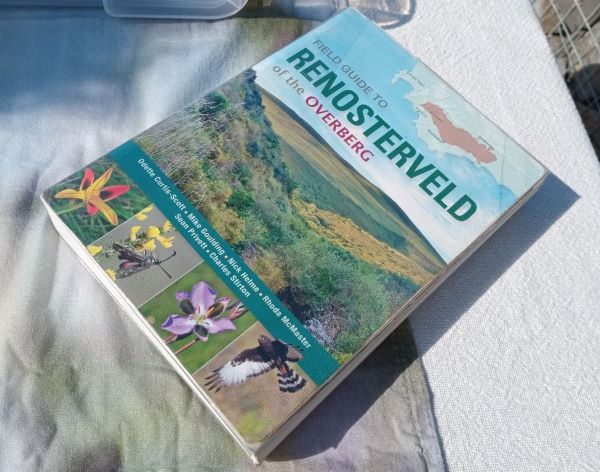 Educational opportunities aplenty at the Sluysken Park planting days
Educational opportunities aplenty at the Sluysken Park planting daysThe benefits of biodiversity gardens for conservation of threatened vegetation types.
One of the aims of Sluysken park is to educate on the importance of the Renosterveld. The natural restoration project in Tokai was on Fynbos, adapted to low nutrient sandy soil, but the Renosterveld is a vegetation type that grows on clay. Restoring native vegetation in the Cape Floral Kingdom is of great importance, and restoring Renosterveld has a special significance.
The Renosterveld is a vegetation type within the Cape Floral Kingdom on the south west tip of Africa. The Cape Floral Kingdom is the smallest Floral Kingdom in the world and it is incredibly diverse. Within it are 1700 species threathened with extinction by urban expansion and alien invasion. Many of these plants occur only in very small areas, with a high rate of endemism. There are two major concentrations of endemism and one of them is within the borders of the city of Cape Town. Conserving urban biodiversity is thus crucial to conservation at the Cape.
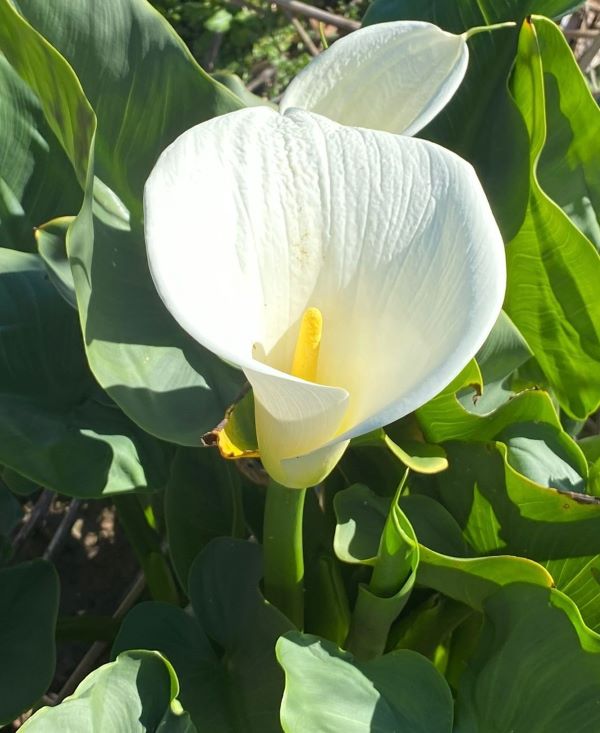 Arum lilies are found in damp parts of the Renosterveld
Arum lilies are found in damp parts of the RenosterveldWhy is Renosterveld threatened ?
Renosterveld grows mainly on clays and silts and degraded granite, that is on higher nutrient soil than Fynbos, which prefers very low nutrient sand. The fertility of Renosterveld soils made the areas where it was ideal for farming. Thus very little remains, less than 5% on the west coast north of Cape Town and less than 2% is formally protected. It is one of the most highly threatened vegetation types in the world.
There are some spots of Renosterveld left on the Tygerberg, which would once have been covered by Renosterveld.
Sluysken Park is situated on the Tygerberg's lower slopes in a spot where urban development has anihilated all the natural vegetation. The project is thus a complete restoration based on researching the potential natural vegetation, rather than a natural regeneration, such as the Fynbos project in Tokai. It is part of a new wave of popular conservation which treasures what we have and what we can rebuild instead of only considering 'prisitine' areas worthy. That was a pipe dream of previous decades, and we can celebrate that a more realistic approach is current.
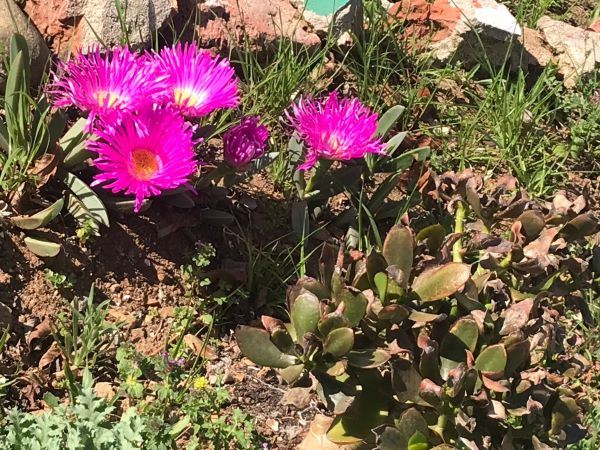 Carpobrotus can be used as a groundcover for soil regeneration in its area of origin (invasive elsehere) and is common in Renosterveld
Carpobrotus can be used as a groundcover for soil regeneration in its area of origin (invasive elsehere) and is common in RenosterveldWhat grows in Renosterveld ?
The Renosterveld is dominated by a variety of plants in the daisy family, such as the grey bush called Renosterbos (rhinoceros bush). There may be some proteas, ericas and restios, but fewer than found in Fynbos. It also contains many Fabaceae (Pea family), Rubiaceae, Sterculiaceae and Thymelaeaceae. These present mainly with grey, small leaves, sometimes prickly.
Renosterveld also contains a high diversity of geophytes such as Iridaceae, Liliaceae and Orchidaceae. So much so that many of the garden plants around the world like gladioli originate in the Renosterveld, having been collected here and horticulturized in Europe centuries ago.
Most of the large fauna which were found in the Renosterveld, like rhinoceros and antelope, supported by its fertility, are now extinct in the area and cannot be reintroduced because there is too little vegetation left to sustain them.
So which type of veld was there before ?
If you are in Cape Town you can check which type of vegetation once existed on the piece of land you propose as a garden. See the link at the end of the article. If the area you choose for a garden is potentially Sand Plains Fynos for example, it is equally worthy of restoration. My own garden is such a place and I'll explore more detail on Sand Plains Fynbos at another time.
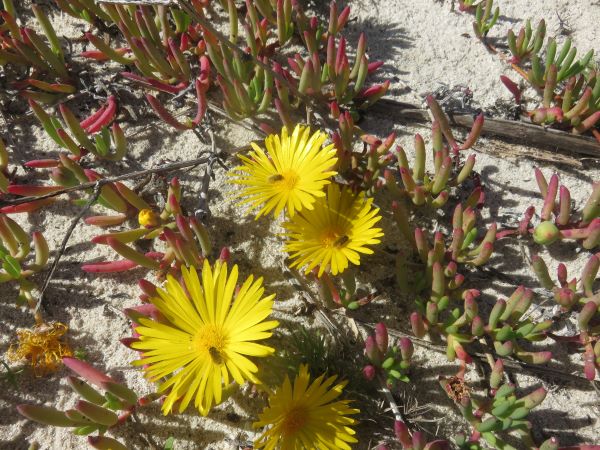 Flies visiting flowers in beach vegetation north of Cape Town.
Flies visiting flowers in beach vegetation north of Cape Town.How do you start your own community wildflower garden ?
The steps for creating a biodiversity supporting garden in your neighbourhood will vary depending on your place of abode, and the local regulations and organizations that can help. I hope some information on how to do it in Cape Town will help anyone around the world a little.
The first biodiversity restoration project I learned from was Communitree. They ran ecology workshops, taught people how to grow plants in home nurseries and helped people get gardens established.
The Tygerberg stepping stone gardens are very active and run workshops from time to time and frequently have planting days and cleanup days organized by Louise and Anel.
The big picture, corridors
To start your own stepping stone garden, you need to identify a possible biodiversity corridor in the area. This would be between two high biodiversity areas or natural corridors. One could bridge through the hostile territory of suburbia, between a river system and a mountain, a coastline and a small nature reserve. The gardens I helped with were all along the canalized Liesbeek river and were attempts to reinstall natural vegetation there that linked via stepping stones with the nearby slopes of Table Mountain.
Find sites for gardens.
The next task is to find possible sites for stepping stone gardens. These can be public or private, but a community will have better access and greater participation in a project on public land. Make a map of the corridor and the proposed stepping stone gardens.
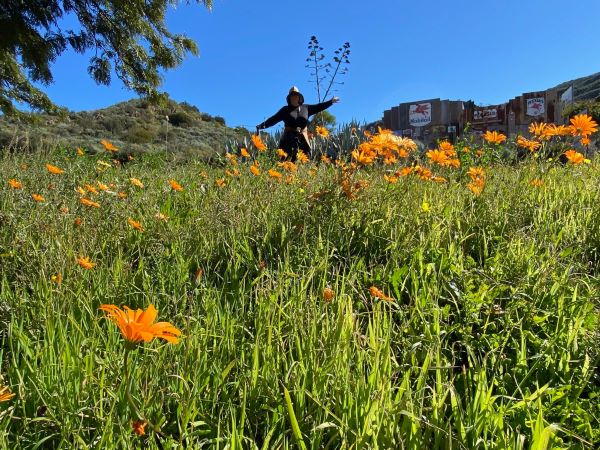 A lovely wild garden on the edge of a village in South Africa
A lovely wild garden on the edge of a village in South AfricaEngage the community and approach city government and other organizations
Get together a group of interested people to help with the project, growing the plants and planting out and caring for the site(s) in the future.
Then you can communicate your idea, in the form of a proposal, to an organization like the Fynbos Corridors Collaboration for further advice on developing the project. Their website url below will show you a detailed project outline. It will also allow you to add your garden to the network so that you can be registered on a map of gardens.
You can also apply to the city agricultural division who have a budget for community gardens, and they also grant permission for community gardens on public land. The CID's or city improvement districts can also fund projects like this. They are organizations created and driven by the community and funded by the community in a specific area that will benefit.
Get help from botanical experts and start sourcing and growing plants
In addition to online research, find the help of a botanist or ecologist to guide you in your plant choices. Approach wildlife organizations, nature parks, universities and technical schools to see if you can bring expert knowledge on board that way.
Once you have identified the right vegetation type and a suite of plants that would fit in, community members may grow plants at home for the garden.
You may need to find help from someone who can give workshops on Fynbos propagation to the community members and supply them with seed and cuttings. The seed should be harvested within 10km in the same vegetation type, by a licensed horticulturist or botanist. You can also apply to collect seed yourself and this depends on who owns the land you will be collecting from.
There are also a few restoration nurseries that will sell you plants that have not been bred for the popular landscaping and gardening industry, but are in their natural state, specifically for rehabilitation projects. This is what the pollinators require, and the plants are also raised to be tougher.
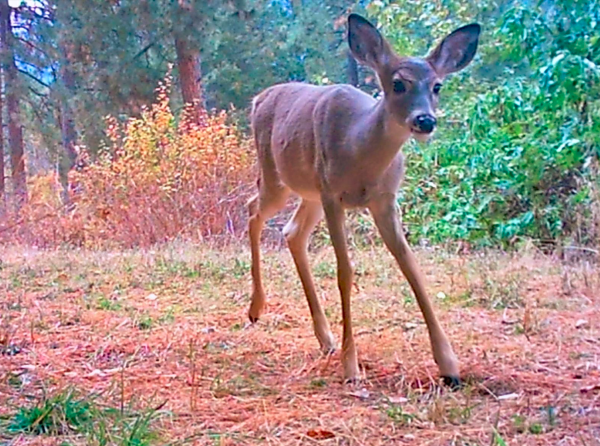 At the Cape there are no longer large herbivores. A strategy for restoring vegetation in some parts of the world is keeping them out.
At the Cape there are no longer large herbivores. A strategy for restoring vegetation in some parts of the world is keeping them out.Some other things you may need
The site may need irrigation at first until the plants are established. Once the plants are established they will generally never need watering again. Irrigation may be less necessary if a three year succession of soil rehabilitation is applied.
After considering all of this the project must be planned in detail. I'm not a project manager so this is my amateur's assessment of some of the planning tasks. You will need to be sourcing plants by purchase or donation from specialist nurseries, plan for community participation in the propagation, planting days, fundraising, making signage, running workshops, media engagement, education for the community and ongoing educational efforts concerning the garden as it grows.
Nathan and the team who prepared the garden said that preparation was surprisingly easy. Weeding came first, the heavy clay soil needed loosening and the addition of compost to lighten it, and it is thoroughly watered a few days before the community planting days. Planting the garden was time consuming but straightforward. 20 – 30 people participated in the planting and they all were active and involved. Watering and weeding would continue for a while. Ongoing planting days are regular. All in all the professionals found it an enjoyable experience as did myself and the other volunteers.
Integration with other biodiversity projects like iNat and Casabio, and with Kirstenbosch, local schools and University research projects and the city could be attempted from the start.
Being well organized keeps people engaged
Louise who organized the Sluysken Park and other projects in the area obviously is very good at this, as all the volunteers commented on how easy it was to participate. This ease of participation is clearly something to consider with volunteers ! We all want to help build but not everyone has a lot of time, money or the right knowledge.
home page for downward links to over 300 articles on natural gardening
the garden for life blog on biodiversity gardening
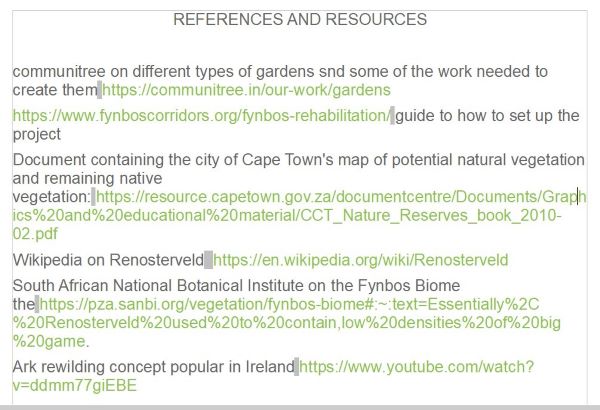
A resource for designing your own biodiversity garden is the Restore Nature newsletter and its links to a design course I'm busy building. If you're not yet signed up for the Newsletter, sign up below.
Restore Nature Newsletter
I've been writing for four years now and I would love to hear from you
Please let me know if you have any questions, comments or stories to share on gardening, permaculture, regenerative agriculture, food forests, natural gardening, do nothing gardening, observations about pests and diseases, foraging, dealing with and using weeds constructively, composting and going offgrid.
Your second block of text...
SEARCH
Order the Kindle E-book for the SPECIAL PRICE of only
Prices valid till 30.09.2023
Recent Articles
-
garden for life is a blog about saving the earth one garden at a time
Apr 18, 25 01:18 PM
The garden for life blog has short articles on gardening for biodiversity with native plants and regenerating soil for climate amelioration and nutritious food -
Cape Flats Sand Fynbos, Cape Town's most endangered native vegetation!
Apr 18, 25 10:36 AM
Cape Flats Sand Fynbos, a vegetation type found in the super diverse Cape Fynbos region is threatened by Cape Town's urban development and invasive alien plants -
Geography Research Task
Jan 31, 25 11:37 PM
To whom it may concern My name is Tanyaradzwa Madziwa and I am a matric student at Springfield Convent School. As part of our geography syllabus for this
"How to start a profitable worm business on a shoestring budget
Order a printed copy from "Amazon" at the SPECIAL PRICE of only
or a digital version from the "Kindle" store at the SPECIAL PRICE of only
Prices valid till 30.09.2023

